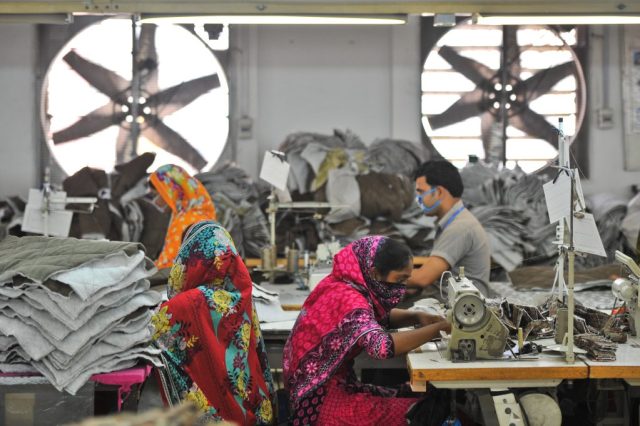Garment and textile industries of Bangladesh were on the mend after the terrible Covid-19 outbreak and lockdown. However, both RMG and textile producers are experiencing difficulties due to recent events. But now, the overall situation is predictable that the Bangladesh garment industry will surely be advanced ahead. The article is about a futuristic view on BD apparel industry.
The key issues they face are the shock of the new Covid version, high raw material prices, hefty freight costs, and so on. The Omicron version of the coronavirus has had little impact on its economy, but illnesses in European countries increase daily. RMG and textiles makers are becoming drastically concerned as a result of this.
The transportation crisis and rising freight costs produce a spiral effect along with cotton prices. This has an impact on textile manufacturers and, eventually, RMG manufacturers. Even though buyers are aware of the high price of cotton, their approval has yet to be reflected in final product costs. However, contributors from garment and textile industries are hopeful that they will cooperate more shortly.
Now they must recognize that the issues mentioned above may persist for an indefinite amount of time. As a result, they must discover ways to deal with problems while continuing forward. Having said that, our apparel and textiles industry is poised for a strong year. Here are a few reasons why:
- Buyers and brands must submit orders right away. Because buyers/brands had to sell from their own stock during the pandemic, all of their outlets urgently require RMG supply.
- Because it is a mature sector with over forty years of expertise, Bangladesh is unquestionably one of the most reliable garment orders. Bangladesh is a tried-and-true lower- and middle-market sourcing destination. Their disciplined team has allowed them to achieve this position. Though their female population appeared to be a burden at one point, it has become a boon for their RMG industry. A large population implies more labor, which equals higher productivity in the RMG industry.
- To secure future growth, they must expand their expertise in creating high-value RMGs. They currently specialize in “big volume single item production,” yet high-value RMG garments necessitate “small volume multiple product production.” This will require a change from a “line setup of 90/100 sewing machines” to a “cluster setup of roughly 20 sewing machines.” Several high-value buyers have already relocated to Bangladesh. Recently luxury brand Ralph Lauren has started denim sourcing from Envoy textiles. It’s a harbinger of shifting patterns.
- Another item to consider is that the recent trade war between China and the United States has provided more opportunities. A large number of supply chain executives are in the process of shifting their sourcing and manufacturing operations out of China. Attracting those businesses to set up shop in Bangladesh will be good.
- Furthermore, our country’s political stability, which has lasted nearly 15 years, is an extra benefit for more investment in Bangladesh, as the political environment is a crucial factor for foreign investors when deciding where to invest.
During the post-pandemic recovery period, Bangladesh Garment Industries have received many export orders. The significant hurdles are meeting buyer goal prices and importing raw supplies on time. Bangladesh clothing exports were over $34.13 billion in 2019; hopefully, they will be higher this fiscal year.
Bangladesh will lose its GSP status in 2026 after graduating from LDC. This could pose a significant impediment to RMG’s expansion. However, the clothing sector in Bangladesh will have a bright future if the government can negotiate a GSP+ agreement with the EU, and the country’s exports will surpass $100 billion by the following decade.
To read more perspective views, Click here..





















